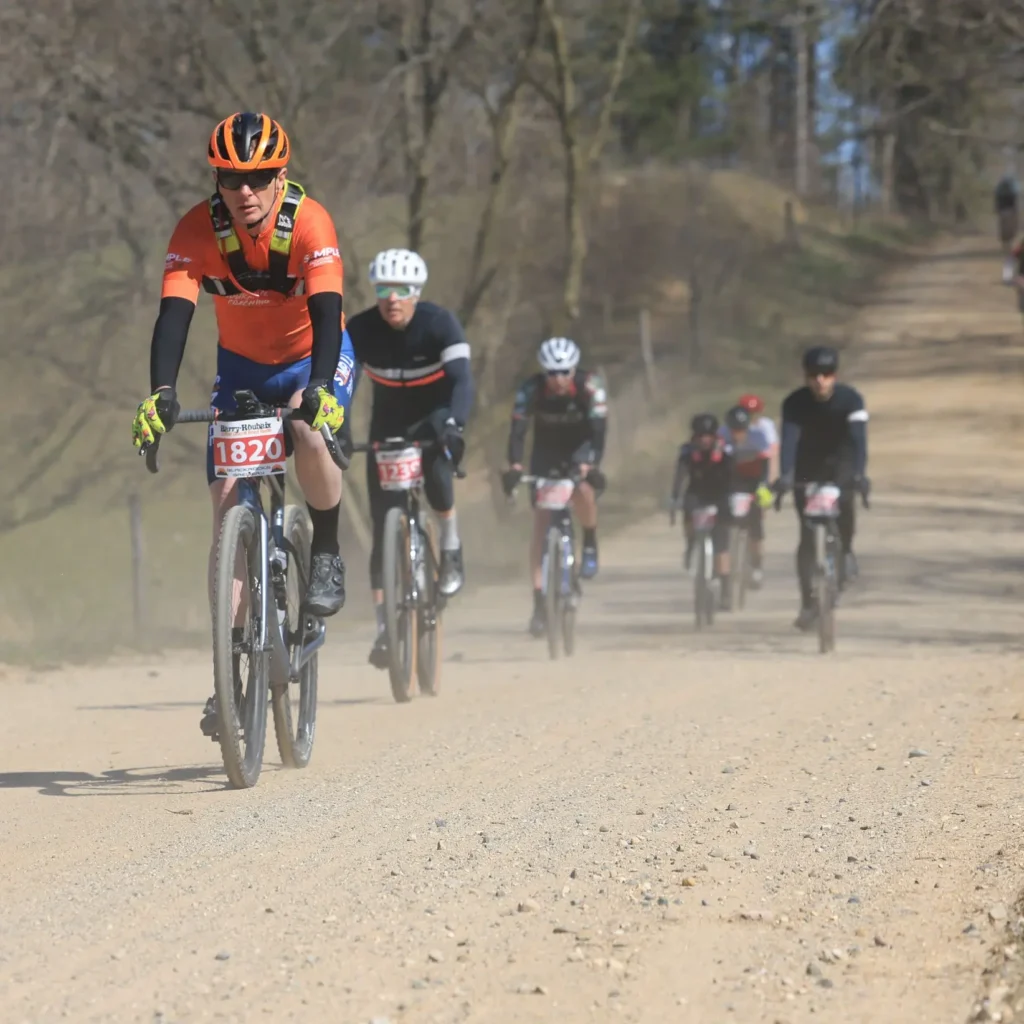Five Strategies to Prevent Injury and Improve Performance For Aging Endurance Athletes
One of the most significant challenges faced by aging endurance athletes, including runners, cyclists, and triathletes who are over 40, is the increased risk of injury.
For example, a lower back/hip problem has been keeping me from fully training on the bike for much longer than usual.
As we age, physiological changes such as decreased muscle mass, reduced flexibility, and slower recovery become more pronounced, making us more susceptible to injuries like strains, sprains, and stress fractures with running and cycling.
Here are five strategies aging athletes can use to manage the increased risk of injury and longer recovery times.

1. Prioritize recovery and rest
As we age, our ability to recover from intense workouts diminishes.
It’s crucial to prioritize rest and recovery days in our training schedules.
This means you need adequate sleep, as this is when the body repairs and rebuilds muscles.
You can also incorporate active recovery activities such as gentle stretching, yoga, foam rolling, massage, or low-impact cross-training to promote circulation and aid in muscle recovery.
Prioritizing recovery also means everyday endurance athletes may need to adjust their training schedules to allow for adequate rest between sessions, reducing the frequency or intensity of workouts to prevent overtraining and injury.
Aging runners, for example, should be cautious about making sudden increases in mileage, as this can put additional stress on muscles, tendons, and joints, increasing the risk of injury.
Instead, focus on gradually building mileage over time to allow the body to adapt and strengthen.
2. Include strength training
Aging everyday endurance athletes need to incorporate strength training into their workout routine to maintain muscle mass, improve bone density, and prevent injury.
Focus on full-body strength training to make sure you are training different movements.
Pay particular attention to areas prone to injury, such as the hips, knees, and ankles.
Over time, muscle imbalances can develop due to repetitive motion and wear and tear on the body.
Strength training and targeted exercises to address these imbalances become increasingly important for injury prevention.
Imbalance and instability in my glute muscles caused the injury in my lower back.
Given the many miles I ride, I need to do more work like clam shells and side lunges to strengthen my glute medius and minimus-side butt muscles.
3. Emphasize mobility exercises
Aging often leads to a decrease in mobility, which can increase the risk of injury, running form, cycling efficiency, and overall performance.
Plus the wear and tear on joints over years of endurance training can lead to conditions such as osteoarthritis.Dedicate time to regular exercises to maintain or improve mobility.
Consider activities like yoga or Pilates, which can enhance range of motion, joint stability, and body awareness.
Running and cycling happen not only repetitively, but in a forward plane of motion.
Yoga, especially, creates hip and shoulder mobility and strength that can reduce possible injury risk.
Finally, incorporate dynamic warm-up exercises before rides to prepare muscles and joints for the demands of cycling and reduce the risk of injury.
Similarly, include a proper cool-down routine after rides to aid in muscle recovery, reduce muscle soreness, and improve flexibility.
4. Focus on nutrition and hydration
Proper nutrition plays a vital role in supporting recovery, reducing inflammation, and promoting overall health for aging athletes.
Stay hydrated before, during, and after workouts to support optimal performance and recovery.
Ensure a well-balanced diet rich in lean protein, healthy fats, complex carbohydrates, and a variety of fruits and vegetables to provide essential nutrients for repair and recovery.
- Protein is essential for muscle repair, recovery, and maintenance, especially for aging athletes who may experience muscle loss (sarcopenia) with age. In each meal or snack, aim to include high-quality protein sources such as lean meats, poultry, fish, eggs, dairy products, legumes, nuts, and seeds. Also, distributing protein intake evenly throughout the day can help support muscle protein synthesis and optimize recovery.
- Healthy fats: Incorporating healthy fats into the diet is important for overall health, joint function, hormone production, and inflammation management. Include sources of unsaturated fats such as fatty fish, avocados, nuts, seeds, and olive oil in your diet regularly. Omega-3 fatty acids, in particular, have anti-inflammatory properties and may help reduce the risk of age-related chronic diseases.
- Micronutrients: Aging athletes should pay attention to their intake of essential vitamins and minerals to support overall health, immune function, and performance. Ensure an adequate intake of micronutrients such as calcium, vitamin D, vitamin B12, iron, and antioxidants through a varied and balanced diet rich in fruits, vegetables, whole grains, lean proteins, and dairy or dairy alternatives. Consider consulting with a healthcare professional or registered dietitian to assess individual nutrient needs and discuss potential supplementation if necessary.
- Anti-inflammatory foods: Chronic inflammation is associated with aging and can contribute to various health issues, including joint pain, cardiovascular disease, and impaired recovery. Including anti-inflammatory foods such as berries, leafy greens, fatty fish, turmeric, ginger, and green tea may help mitigate inflammation and support recovery and overall health.
- Meal timing and composition: Pay attention to meal timing and composition to support performance, recovery, and energy levels. Aim to consume balanced meals containing carbohydrates, protein, and healthy fats before and after workouts to provide energy, support muscle repair, and replenish glycogen stores. Additionally, consider spreading protein intake evenly throughout the day to optimize muscle protein synthesis and recovery.
5. Listen to Your Body
This may be the most important of the strategies.
It’s hard to acknowledge that time has caused changes.
Pay attention to signals from your body, such as persistent pain, fatigue, or decreased performance.
Pushing through discomfort or ignoring warning signs of potential injury can lead to more severe issues down the line.
Be willing to adjust training plans, modify workouts, or take additional rest days as needed to prevent overtraining and injury.
If you experience any discomfort or signs of potential injury, consider reducing mileage, taking additional rest days, or seeking guidance from a healthcare professional. Ignoring warning signs can lead to more severe issues and longer recovery times.
On the bike, ensuring proper bike fit is essential for older cyclists to prevent discomfort, pain, and injury while riding.
A professional bike fit can help optimize bike position, saddle height, handlebar reach, and cleat alignment to minimize stress on joints and muscles and improve comfort and efficiency.
Three things to consider…
Here are three things to consider about endurance training when you’re getting older:
- Listen to your body and make sure you’re giving yourself time to recover and good nutrition.
- Get in the gym to strength train
- Do yoga regularly to maintain joint fitness
Need more?
GET A FREE Core Strength and Stability training video when you opt in to receive my weekly blog posts about what works in endurance sports.
SIGN UP FOR A Virtual Coffee so we can discuss your goals, ask questions, and talk about making your endurance training more effective, fun, and Simple.
Paul Warloski is a:
- USA Cycling Level 2 Coach
- RRCA Running Coach
- Training Peaks Level 2 Coach
- RYT-200 Yoga Instructor
- Certified Personal Trainer





